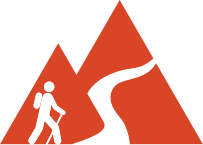Map care
Maps are amazingly detailed descriptions of the land and very useful for navigating in the bush, but they are vulnerable to weather, and poor care. Torn, damaged maps are harder to read and can leave a group in a tricky situation if they are relying on a single map that gets damaged.
Since maps also may have to last a long time, it helps to take care of them. Some bushwalkers choose to use photocopies instead and transcribe routes/passes and notes to the originals at a later stage. Ensuring that there are backup maps in the group is also very sensible as it’s easy to drop a map in water or lose it in thick scrub.
A pencil is recommended for marking routes or passes on a map. Use light lines so they may be erased quickly without smearing and smudging or leaving marks that may cause confusion later. Back home, consider going over the pencil additions again with a harder pencil or ink pen.
 Copying
Copying
Photocopying sections of a map and using them in the field is a good way of protecting the original. Under copyright laws, a certain amount of photocopying of maps for personal use is ok, although it is a bit of a grey area. Some maps give permission for photocopying under “fair dealing”, others specify that no part of the map may be reproduced. Bushwalkers intending to photocopy maps are advised to check with the Australian Copyright Council, and/or the producers of the map.
The main disadvantage of using photocopied maps is that any handwritten notes made during the trip have to be transcribed to the original. Transcribing back and forth introduces errors. The other issue is that writing can be harder to see on a photocopy. Best to make sure that all notes are made in clear black pen, and the writing is easily legible.
 Map case
Map case
Maps are documents printed on paper and require protection from water, mud, and tearing. To prevent maps from getting damaged, where possible, use a waterproof map case, or keep it in a pocket, or in some other place where it is handy for use but still protected.
Choose a map case that is waterproof, and has a cord so that the map can rest around the neck. Ideally, select a map case that is large enough to fit two sections of the map, and provided the map is folded correctly, it’s easy to transition between segments even in bad weather.
 Folding maps
Folding maps
Shop-bought maps are typically folded in a peculiar way that means the user has to open up the entire map every time they move off one folded section and onto another. On some trips this can happen as often as once and hour. And while it may be possible to get away with unfolding and refolding the map every few kilometres in good weather, it gets much harder in the rain and wind.
For bushwalkers, a better technique is to fold the map down the middle and then concertina it. Do this in the comfort of the living room at home rather than the bush to make sure that the map creases are all folded neatly.
The US army also recommends the above method (diagram below, left image) or folding the map small enough to fit in a pocket (diagram below, right image). The folded map is still available for use without having to unfold it entirely.
 Copying
Copying
 Map case
Map case
 Folding maps
Folding maps

 Map care
Map care